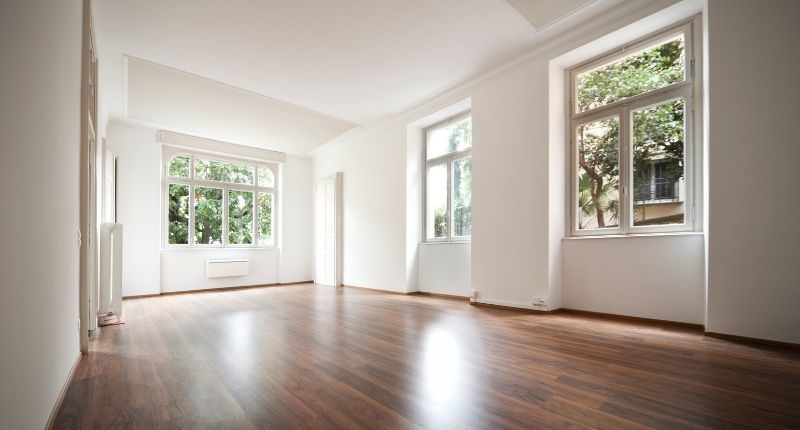- National vacancy rate at 1.3%
- Rate is now the lowest level seen since 2017, and 0.7 percentage points lower than Jan 2021
- The tightening rental market was driven by a monthly decline in the number of vacant rental listings
National vacancy rates have hit their lowest point since 2017, at 1.3%, according to Domain’s latest research.
The decrease continues the trend of what was seen for most of 2021.
The 1.3% rate is now the lowest level seen since Domain records began in 2017, and 0.7 percentage points lower than the same time last year.
According to Domain, the tightening rental market was driven by a monthly decline in the number of vacant rental listings across all cities.
January 2022 vacancy rates
| January 2022 | December 2021 | January 2021 | |
| National | 1.3% | 1.7% | 2.0% |
| Sydney | 1.9% | 2.6% | 2.7% |
| Melbourne | 2.4% | 3.2% | 4.4% |
| Brisbane | 1.0% | 1.3% | 1.5% |
| Perth | 0.6% | 0.6% | 0.7% |
| Adelaide | 0.3% | 0.4% | 0.6% |
| Hobart | 0.2% | 0.3% | 0.4% |
| Canberra | 0.7% | 1.0% | 0.8% |
| Darwin | 0.8% | 1.3% | 0.7% |
Source: Domain
There was a monthly decrease in vacancy rates across all capitals except Perth, which remains steady.
Vacancy rates are at a multi-year low in Brisbane, Adelaide, and Hobart.
Most cities have a lower vacancy rate year on year, apart from Darwin, which is 0.1 percentage points higher than last year.
Vacancy rates remain tight and a landlords’ market in all capitals, except Melbourne.
After the elevated number of vacant rental listings seen in December, this month’s decline in listings has seen an impact on all capital cities’ vacancy rates, with rates dipping significantly below the Covid-induced spike over the last two years.
Sydney
After the rising vacancy rates seen in the previous two months, Sydney recorded a vacancy rate of 1.9% in January, down monthly 0.7 percentage points.
Back below pre-Covid levels, it’s the lowest rate since March 2018 and 0.5 percentage points off the lowest recorded level seen in May 2017.
There was a 27.5% decrease month on month in the number of vacant rental listings, with just under 11,000 listings in January.
Domain said the tightening conditions in Sydney could see the continued shift to a landlord’s market, as their December rent report showed record median house asking rents, up 3.4% over the quarter and units by 1.0%.

Melbourne
Vacancy rates dropped significantly in January to 2.4%, down 0.8 percentage points, continuing the downward decline of vacancy rates.
After rising in December, this month’s decline saw rates return to levels lower than April 2020.
Rates are also lower year on year, with the biggest yearly decrease across the capitals recorded in Melbourne, down 2 percentage points.
Although vacancy rates are reducing, they are yet to hit the pre-pandemic levels which hovered around 1.6% in 2019.
Rental listings have also fallen by 23.1% compared to December, with just under 12,500 vacant rentals at the end of January.
Domain said Melbourne’s rental market is continuing to improve after their December rent report showed record house rents, up 3.5% over the quarter, with unit rents up 1.4% quarter-on-quarter.

Canberra
There was a fall in the vacancy rates in January after two months of rising rates, down 0.7%. This is only two percentage points off the lowest recorded level seen in March 2018 and equalling the rates last seen in July 2021 and lower than April 2020.
There was also a significant decline in the number of vacant rental listings, down 32.1% compared to last month.

Darwin, Perth, Brisbane, Adelaide, and Hobart
Brisbane, Adelaide and Hobart vacancy rates are at their lowest point since Domain records began.
Perth and Darwin vacancy rates also remained historically lower compared to previous years.
Adelaide vacancy rates held steady at their lowest point since Domain records began and Hobart remains at a multi-year low.
While there was an increase in vacancy rates in Brisbane, Perth, and Darwin, they are still historically lower than in previous years.
Reduced rental stock
Rental stock continues to trend lower this month across all capital cities, consistent with increased demand seen in January.
Stock is also lower in the capitals annually, except in Darwin.
National rental stock fell to just under 28,000 dwellings, down 35.6% from January 2021.
Melbourne saw a 41.8% decrease in stock year on year, Sydney also recordws a decline, down 29.8%.
Capital city regions
Several regions across Perth saw the largest rise in vacancy rates, with Cottesloe – Claremont recording the biggest monthly difference of 0.4 percentage points, up 1.1%.
Largest monthly rise in the vacancy rate
| Rank | City | Area |
| 1 | Perth | Cottesloe – Claremont |
| 2 | Brisbane | Springfield – Redbank |
| 3 | Perth | Serpentine – Jarrahdale |
| 4 | Sydney | Hawkesbury |
| 5 | Perth | Mundaring |
| 6 | Adelaide | Gawler – Two Wells |
| 7 | Melbourne | Brimbank |
| 8 | Perth | Kwinana |
| 9 | Perth | Canning |
| 10 | Perth | Perth City |
Source: Domain
Half of the regions with the largest monthly decline in vacancy rates are located in New South Wales, followed closely by Victoria with four regions. Melbourne City topped the list this tie, with a decline from 4.5% in December to 3.0% in January.
Largest monthly decline in vacancy rate
| Rank | City | Area |
| 1 | Melbourne | Melbourne City |
| 2 | Sydney | Rouse Hill – McGraths Hill |
| 3 | Melbourne | Stonnington – West |
| 4 | Sydney | Sydney Inner City |
| 5 | Melbourne | Banyule |
| 6 | Sydney | Canterbury |
| 7 | Melbourne | Boroondara |
| 8 | Brisbane | Brisbane Inner |
| 9 | Sydney | Chatswood – Lane Cove |
| 10 | Sydney | Pennant Hills – Epping |
Source: Domain
By city
Highest vacancy rates, by city
| Rank | Sydney | Melbourne | Brisbane & Gold Coast | Perth | Adelaide |
| 1 | Ku-ring-gai (3.1%) | Stonnington – East (5.4%) | Brisbane Inner (2.5%) | Cottesloe – Claremont (1.1%) | Adelaide City (2.1%) |
| 2 | Parramatta (3.11%) | Whitehorse – West (4.4%) | Sherwood – Indooroopilly (2.2%) | Perth City (1%) | Burnside (0.5%) |
| 3 | Canterbury (2.8%) | Stonnington – West (4%) | Nathan (1.9%) | Canning (0.7%) | Unley (0.4%) |
| 4 | Ryde – Hunters Hill (2.6%) | Boroondara (3.8%) | Kenmore – Brookfield – Moggill (1.7%) | Joondalup (0.7%) | Onkaparinga (0.4%) |
| 5 | Hornsby (2.5%) | Banyule (3.7%) | Brisbane Inner – West (1.7%) | Fremantle (0.6%) | Holdfast Bay (0.4%) |
Source: Domain

Lowest vacancy rates, by city
| Rank | Sydney | Melbourne | Brisbane & Gold Coast | Perth | Adelaide |
| 1 | Richmond – Windsor (0.3%) | Mornington Peninsula (0.4%) | Mudgeeraba – Tallebudgera (0.1%) | Kalamunda (0.2%) | Playford (0.1%) |
| 2 | Camden (0.4%) | Yarra Ranges (0.4%) | Nerang (0.2%) | Rockingham (0.3%) | Marion (0.1%) |
| 3 | Blue Mountains (0.4%) | Cardinia (0.4%) | Strathpine (0.2%) | Kwinana (0.3%) | Salisbury (0.1%) |
| 4 | Wyong (0.4%) | Sunbury (0.5%) | Ormeau – Oxenford (0.2%) | Gosnells (0.3%) | Port Adelaide – East (0.1%) |
| 5 | Gosford (0.4%) | Manningham – East (0.6%) | Robina (0.2%) | Cockburn (0.3%) | Tea Tree Gully (0.2%) |
Source: Domain








